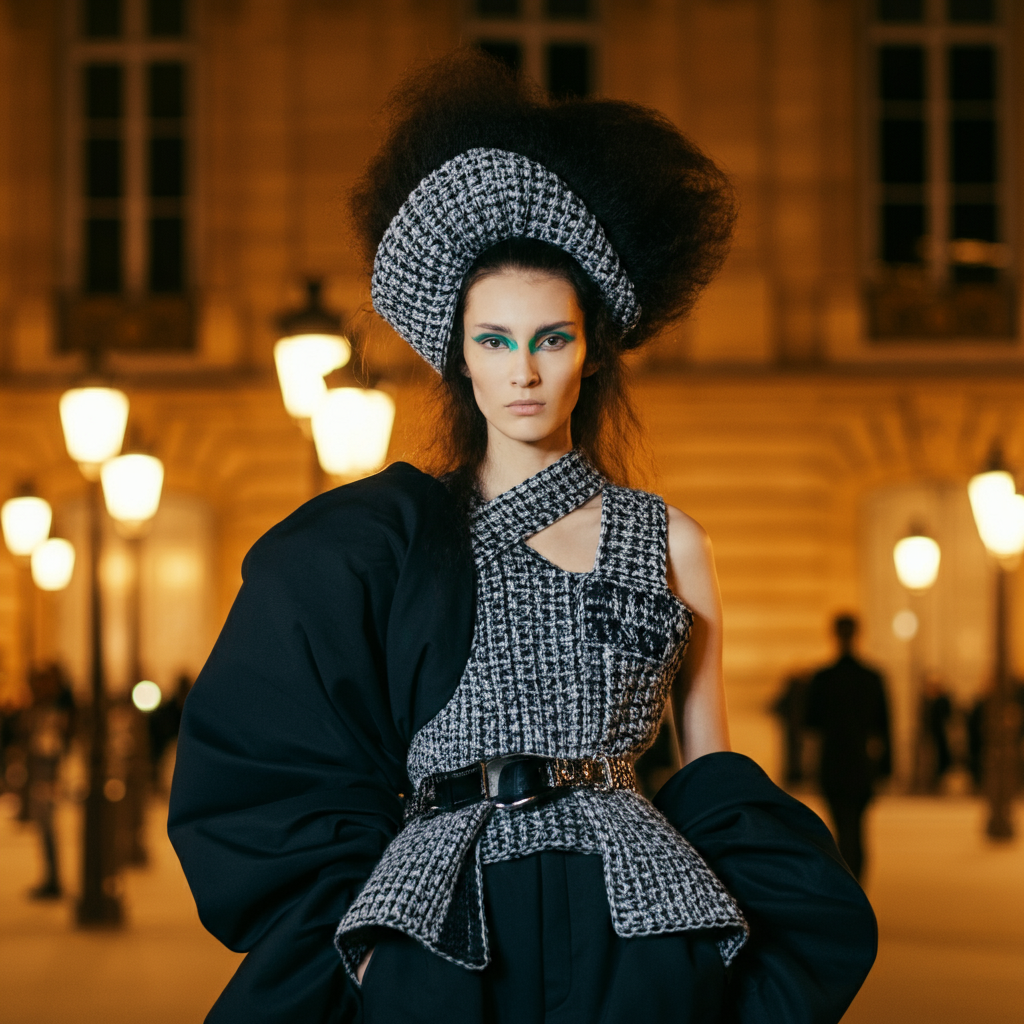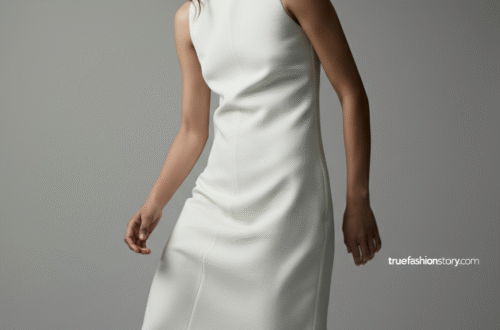Paris Fashion Week, or pfw fashion, is more than just a series of runway shows; it’s the grand finale of fashion month and a global stage for style innovation. For designers, models, editors, and fashion lovers, it represents the pinnacle of creativity and trendsetting. The pfw fashion scene is where new ideas are born and future classics are unveiled. From the historic haute couture houses to emerging avant-garde designers, the energy in Paris is electric. This guide will walk you through everything you need to know about the spectacle, from its rich history to the latest street style trends and what makes it the most anticipated event on the fashion calendar.
Key Takeaways
- PFW is a Major Pillar of Fashion: Along with New York, London, and Milan, Paris Fashion Week is one of the “Big Four” global fashion events, closing out the season with high-profile shows.
- It’s More Than Just Runways: The real magic of pfw fashion happens both on and off the runway. Street style has become as influential as the collections themselves.
- Haute Couture is Unique to Paris: Paris is the only city to host dedicated Haute Couture Week, showcasing custom-fitted, handmade garments that are true works of art.
- Trends Start Here: Many of the biggest trends in clothing, accessories, and beauty for the upcoming seasons make their debut during PFW.
- It’s a Blend of Old and New: Iconic heritage brands like Chanel and Dior show alongside exciting new talent, creating a dynamic and diverse fashion landscape.
The History and Importance of PFW Fashion
To truly understand pfw fashion, you have to look back at its origins. The concept of fashion shows began in Paris in the mid-19th century with couturier Charles Frederick Worth, who was the first to present his collections on live models. However, the official Paris Fashion Week as we know it was established much later.
The first recognized Paris Fashion Week was organized in 1973 by the Fédération Française de la Couture. Its inaugural event, known as the “Battle of Versailles,” was a spectacular fundraiser to restore the Palace of Versailles. It famously pitted five French designers (Yves Saint Laurent, Hubert de Givenchy, Pierre Cardin, Emanuel Ungaro, and Marc Bohan of Christian Dior) against five American designers (Oscar de la Renta, Bill Blass, Anne Klein, Halston, and Stephen Burrows). This event not only raised money but also solidified Paris’s status as the world’s fashion capital, putting American designers on the global map. Since then, PFW has grown into a bi-annual juggernaut, dictating the future of style.
Why PFW Sets the Global Tone
Paris holds a special place in the fashion world. It’s home to some of the most legendary fashion houses in history. Brands like Chanel, Dior, and Saint Laurent have built their legacies in this city, and their runway shows are major cultural moments. The pfw fashion scene is known for its emphasis on craftsmanship, artistry, and a certain je ne sais quoi—that effortless elegance Parisians are famous for. The shows are often grand, theatrical productions held in iconic locations like the Grand Palais or the Louvre, adding to the sense of spectacle and importance. This combination of history, artistry, and commercial power is why the trends seen at PFW have such a massive ripple effect across the entire industry.
Decoding the PFW Schedule: Haute Couture vs. Ready-to-Wear
Paris Fashion Week happens multiple times a year, but not all weeks are the same. The events are split primarily between Ready-to-Wear (RTW) and Haute Couture, with menswear collections also having their own dedicated weeks.
Ready-to-Wear (Prêt-à-Porter)
This is what most people think of when they hear “Paris Fashion Week.” These shows happen twice a year:
- February/March: Showcasing Autumn/Winter collections.
- September/October: Showcasing Spring/Summer collections.
Ready-to-Wear collections feature clothing that is produced in standard sizes and sold in stores worldwide. While still high-end, it’s the more accessible side of luxury pfw fashion. These are the collections that directly influence what you’ll see in department stores and on high-street fashion racks a few months later. Top brands like Louis Vuitton, Balenciaga, and Loewe present their RTW lines during these weeks.
Haute Couture
Haute Couture Week is a unique and exclusive event held in Paris twice a year (in January for Spring/Summer and July for Autumn/Winter). It is the absolute peak of fashion as an art form. The term “haute couture” is legally protected in France and can only be used by fashion houses that meet a strict set of criteria defined by the Chambre Syndicale de la Haute Couture.
These criteria include designing made-to-order clothing for private clients with one or more fittings, having an atelier in Paris that employs at least 15 full-time staff, and presenting a collection of at least 50 original designs to the public every season. The craftsmanship is extraordinary, with thousands of hours of hand-sewn embroidery, beading, and fabric manipulation going into a single garment. Exploring these collections is a core part of the pfw fashion experience, as detailed in many articles on the truefashionstory.com Blog.
|
Feature |
Ready-to-Wear (RTW) |
Haute Couture |
|---|---|---|
|
Production |
Factory-produced in standard sizes |
Handmade, custom-fitted for a client |
|
Frequency |
Twice a year (A/W and S/S) |
Twice a year (A/W and S/S) |
|
Purpose |
Commercial sales in retail stores |
Artistic expression, for private clients |
|
Price |
Expensive, but accessible luxury |
Extremely expensive, often price on request |
|
Designers |
Wide range of luxury brands |
A select, protected group of houses |
|
Audience |
Buyers, press, influencers, celebrities |
Ultra-wealthy clients, press, celebrities |
The Unofficial Runway: PFW Street Style
In recent decades, the fashion happening outside the show venues has become just as important as what’s on the catwalk. The streets of Paris turn into a live runway, with editors, influencers, models, and fashion enthusiasts showcasing their best looks. This is the heart of modern pfw fashion culture.
Street style at PFW is a vibrant mix of high-low dressing. You might see someone pairing a vintage band t-shirt with a couture skirt or styling a designer handbag with affordable sneakers. It’s less about following strict rules and more about personal expression. Photographers flock to capture these looks, and the images are quickly spread across social media and fashion websites, creating trends in real-time.
Key Elements of PFW Street Style
- Statement Outerwear: A unique coat or jacket is often the centerpiece of a PFW street style look, whether it’s a bold trench, a colorful faux fur, or an oversized blazer.
- Innovative Layering: Parisians are masters of layering. Think a turtleneck under a slip dress or a hoodie under a tailored coat.
- Must-Have Accessories: The right bag, shoe, or piece of jewelry can make an outfit. During PFW, you’ll see the season’s “It” bags and statement shoes everywhere.
- A Nod to the Classics: While trends are key, timeless Parisian staples like a well-fitting pair of jeans, a classic blazer, and chic boots are always present.
What to Expect from PFW Fashion Trends
The trends emerging from pfw fashion week often set the agenda for the next six months. While each season brings something new, there are recurring themes that define the Parisian aesthetic.
Recent Trend Spotting
The latest shows have hinted at several key directions. We’ve seen a resurgence of polished, ladylike silhouettes, with full skirts and cinched waists making a comeback at houses like Dior. At the same time, there’s a playful, almost surrealist approach from brands like Schiaparelli and Loewe, featuring exaggerated shapes and unexpected materials.
Color Palettes
Color trends are always a major takeaway. One season might be dominated by bold, optimistic brights, while another might lean into earthy, muted tones. Recently, we’ve seen a lot of deep reds, classic blacks and whites, and surprising pops of metallic silver.
Fabric and Texture
The choice of fabric is crucial in pfw fashion. Luxurious materials like silk, leather, and cashmere are staples. However, designers are increasingly experimenting with innovative textiles, including sustainable fabrics and high-tech materials, pushing the boundaries of what clothing can be.
The Future of PFW Fashion in a Changing World
The fashion industry is undergoing significant changes, and PFW is evolving with it. The rise of digital media has democratized fashion, allowing more people than ever to see the collections in real-time through live streams and social media. This shift has changed the very nature of a fashion show, turning it from an exclusive industry event into a global marketing moment.
Furthermore, there is a growing conversation around sustainability and ethics in fashion. Designers at PFW are increasingly being challenged to address their environmental impact. This has led to a greater focus on upcycling, using eco-friendly materials, and creating timeless pieces that are meant to be cherished for years rather than discarded after one season. The future of pfw fashion will likely involve a blend of digital innovation and a renewed commitment to conscious, meaningful design.
Frequently Asked Questions (FAQ)
Q: What does PFW stand for?
A: PFW stands for Paris Fashion Week. It’s one of the four major international fashion weeks.
Q: How can I watch PFW shows?
A: While physical attendance is usually by invitation only, most major brands now live-stream their shows on their websites, YouTube channels, and social media platforms like Instagram.
Q: What is the difference between PFW and Haute Couture Week?
A: PFW typically refers to the Ready-to-Wear shows, which feature commercially produced collections. Haute Couture Week is a separate, more exclusive event showcasing one-of-a-kind, handmade garments for private clients. Both are central to the pfw fashion ecosystem.
Q: Who are the most important designers at PFW?
A: This includes historic powerhouses like Chanel, Christian Dior, Saint Laurent, and Givenchy, as well as influential modern brands like Balenciaga, Louis Vuitton, and Loewe. There are also many exciting emerging designers to watch each season.
Q: How does PFW street style influence mainstream fashion?
A: Street style looks are photographed and shared globally, instantly creating buzz around certain items, brands, or styling techniques. What an influential editor or influencer wears outside a show can become a commercial trend just as quickly as a look from the runway.





